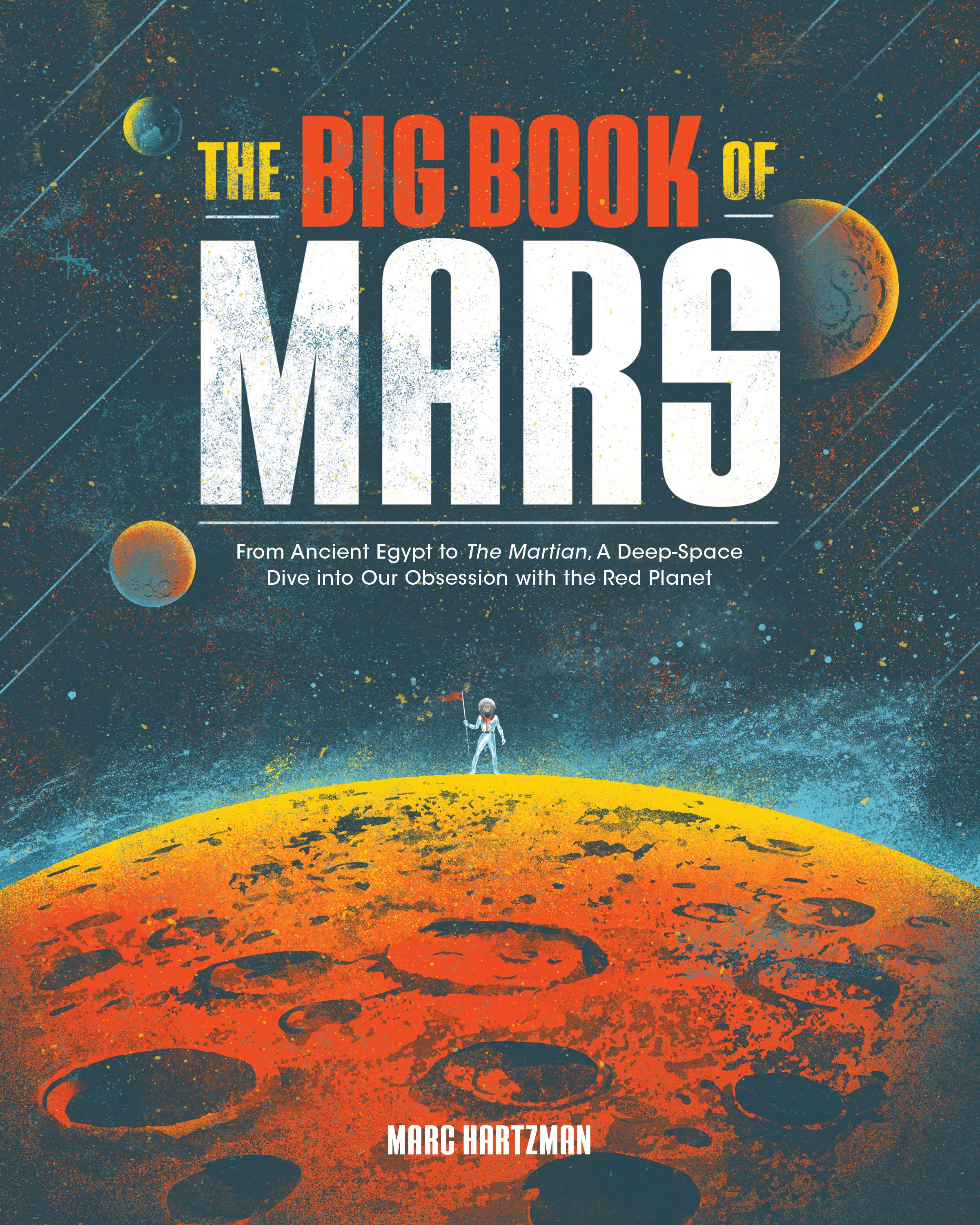One of my earliest memories is of my dad sitting at the kitchen table in the weeks leading up to a Halloween, telling me about mass hysteria. He used to love talking about the famous Mercury Theatre on the Air’s radio adaptation — starring and directed by Orson Welles — of H.G. Wells’ The War of the Worlds. “People really flipped,” I remember him saying. “They actually thought Martians were invading.”
A year or two later, I stayed up all night reading The War of the Worlds for myself. I read until the sun rose because I was too afraid to go to sleep. (Cut me a break — I was like 8 years old.) All this is a long way to say that a few of my earliest memories as a fan of popular fiction involve Martians. The same is probably true for anyone who soaked up vintage sci-fi as a kid.

But still, it wasn’t until I read Marc Hartzman’s new encyclopedic account of Mars in history and pop culture that I realized just how much our planet’s little red neighbor has infiltrated my consciousness. Marvin the Martian, Mars Attacks!, David Bowie’s “Life on Mars?,” Ray Bradbury’s The Martian Chronicles — Mars is everywhere*, and Marc Hartzman’s The Big Book of Mars (Quirk Books) is a full catalogue of our encounters, in fact and fiction, with the red planet.
Subtitled From Ancient Egypt to The Martian, a Deep-Space Dive into Our Obsession with the Red Planet, Hartzman’s new book does make a case that humans’ interest with Mars surpasses that of any of our other planetary neighbors. But it’s only in the sheer volume of material collected in The Big Book of Mars that Hartzman makes his case. There’s no argument, rather just an overview of a collective fascination.
Though I immediately flipped to the “Mars Invades Pop Culture” section looking for (and finding) references to Bradbury and Bowie, Hartzman doesn’t neglect humanity’s real-world interactions with its neighbor. From early astronomy to NASA’s Jet Propulsion Labs (JPL), the Mariner and Viking missions, and the rovers spelling out “J-P-L” in the oxidized sand in Morse Code, The Big Book of Mars presents the history of Mars observation and exploration in easily digestible segments. It’s particularly delightful to read about our changing opinions about the possibility of life on Mars — and what that life might resemble.
In 1930, Hartzman writes, one journalist reporting for Popular Science Monthly hypothesized that Mars was populated by “herds of beaver-creatures.” He explained their halted evolution by saying, “There seems no reason to believe that Martian life has gone farther than that.” Earlier writers speculated Martian society would be far more advanced than anything yet seen on Earth. Then, of course, there are the theories that humans are actually descended from ancient refugees from a dying Mars.
This is one book readers can judge by its cover. The Big Book of Mars sports a gorgeously painted, vintage pulp-inspired cover. A lone astronaut stands astride the cratered surface of the red planet as comets and stars shine in the background. The book hints at adventure, danger, and mysteries not yet imagined, let alone confronted, by Earth-bound humans. Especially in a year when I have hardly left my apartment, the promise of adventure and the unknown is particularly powerful.
Hartzman’s The Big Book of Mars is a wildly entertaining and comprehensive look at Earth’s obsession with its planetary neighbor. This book is recommended for NASA nerds, sci-fi devotees, and anyone feeling a little too cooped up at the moment.
* But wait, there’s more! Gustav Holtz’ “Mars,” Edgar Rice Burroughs’ John Carter of Mars, the centaurs won’t shut up about Mars when Harry Potter first meets them in The Sorcerer’s Stone, everyone emigrates to Mars in Blade Runner, Philip K. Dick’s Martian Time Slip, Doctor Manhattan moves to Mars after getting some bad news in Watchmen — I had never stopped to think about it, but Mars is almost omnipresent in pop culture.